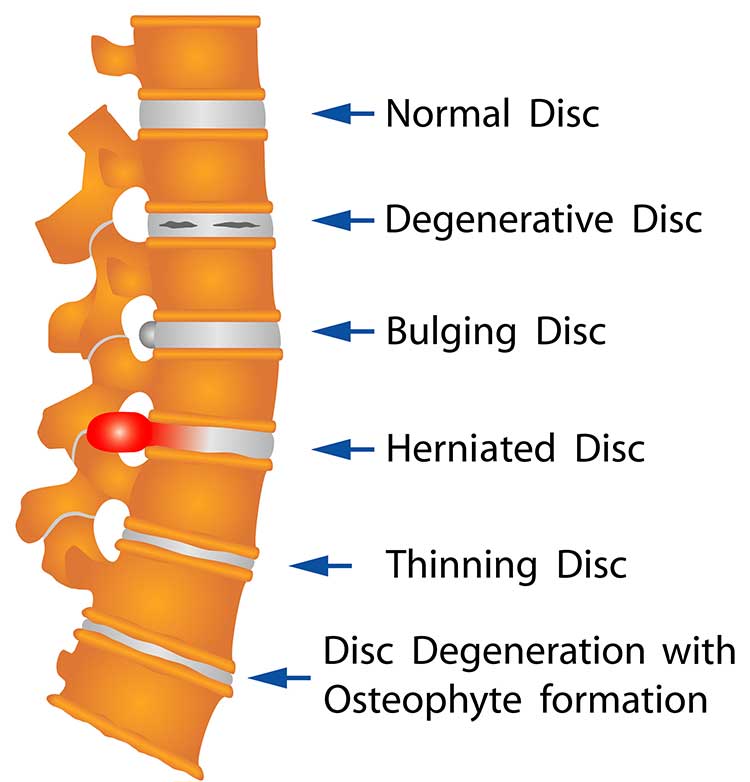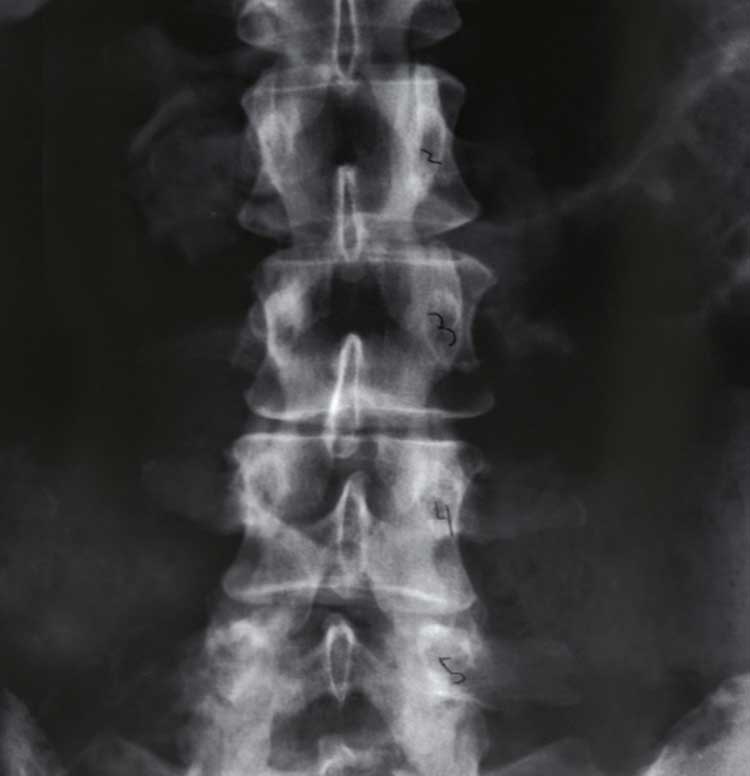We can find the source of your spine pain to determine the best treatment plan.
Your back is made up of several discs, nerves, and muscles. As a result, pain and orthopedic conditions that relate to the back are common. Back pain can surface in many forms, including:
- Sudden and sharp
- Dull and gradual
Herniated disc – The discs in your back contain an inner gel-like substance that can push through the disc’s outer layer and put pressure on nearby nerves. This herniation can happen simply with aging, because your discs retain less water over time and become less flexible. However, a herniated disc can also occur as a result of lifting or strenuous activity. Rest, ice therapy, heat therapy, epidural injections, and surgical removal of the affected disc can all help relieve the symptoms.
Spinal stenosis – Another condition that can occur with normal wear and tear on your body, spinal stenosis is characterized by the narrowing of your spinal canal. It can cause back pain and pain and weakness in the legs. Potential treatments include physical therapy, lumbar traction therapy, steroid injections, chiropractic adjustments, and minimally-invasive surgical decompression or spinal fusion.
Degenerative disc disease – Degenerative disc disease describes the normal wear and tear to your spinal discs that occur with aging. This occurs because the discs lose fluid and develop tiny cracks over time, resulting in pain and secondary conditions like herniated discs and osteoarthritis. Treatments of degenerative disc disease include managing symptoms through injections, physical therapy, and medications, or surgery such as artificial disc replacement.


Sciatica – Sciatica is characterized by pain that radiates from your lower spine and down one leg, along the path of the sciatic nerve. This results in inflammation and some numbness, and is typically caused by a bone spur or a herniated disc compressing the nerve. Steroid injections, medications, and physical therapy can help reduce pain associated with sciatica. For severe cases, surgery may be used to remove the bone spur or disc that is pressing on the nerve.
Spondylolisthesis – This condition is the result of one vertebra sliding forward over the one beneath it. Sometimes, spondylolisthesis causes no symptoms at all. However, the symptoms of lower back or buttocks pain, along with numbness or weakness, can surface. The condition is caused by defective joints, injured joints, stress fractures, and infection or arthritis that damages a joint. Medications and physical therapy can help to relieve symptoms. In more serious cases, such as severe pain, surgery may be performed in order to remove bone or tissue to take pressure off of the nerves or spinal cord.
Compression fracture – A spinal compression fracture is a break in a bone located in the spine. They can result in severe pain, leg weakness, loss of bladder control, and more. The most common cause of compression fractures is osteoporosis, but trauma to the spine can result in fractures as well. Pain medications, bracing, and rest are treatment options. Surgery may be necessary in extreme cases, and can consist of internally fixing the vertebra in place so that it can heal properly.
Spinal arthritis – Spinal arthritis (osteoarthritis) is the general breakdown of cartilage in the joints and discs in your back. This is caused by general wear and tear and aging of the body, but injuries can cause it as well. Symptoms of spinal arthritis include pain and stiffness in the neck and back, as well as tingling or numbness in the arms and legs in some cases. Strengthening exercises, weight loss, electrical nerve stimulation, and massage are all methods of non-surgical treatment.
Scoliosis – Scoliosis is a curve of the spine that moves to one side. This condition can be present at birth or can be caused by abnormal nerves and muscles or by a traumatic injury. In most cases, the exact cause of scoliosis is not clear. In most cases, scoliosis cases are monitored regularly with imaging tests to ensure that the curve is not worsening. Braces can be worn to halt the progression of the curve. For severe curves, surgery can be used to correct the curvature and hold it in place.
Back pain can also occur as a result of general overuse or injuries. During your consultation with your doctor, you can begin to pinpoint the causes of your back pain and determine together which treatment method will be most effective for your situation.


